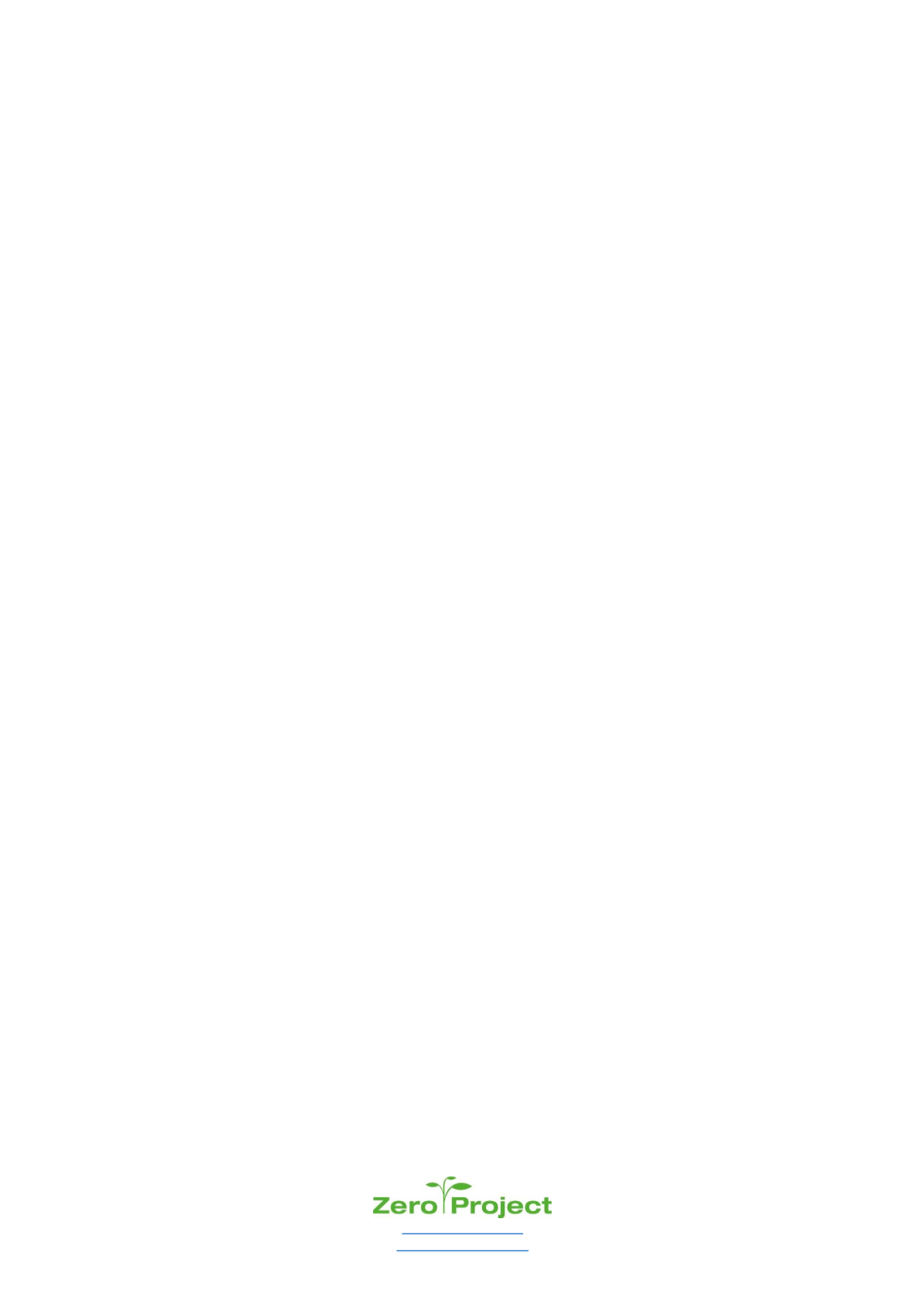
 www.zeroproject.org
office@zeroproject.org
www.zeroproject.org
office@zeroproject.org
277 – Guidelines for accessible information of 2015, European Union
Responsible body:
European Agency for Special Needs and Inclusive Education (coordinator),
together with European Schoolnet (EUN), the International Association of
Universities (IAU), UNESCO, the DAISY Consortium and the Global Initiative of
Inclusive ICT (G3ICT)
Country of implementation:
Aiming at being implemented worldwide
Beneficiaries targeted:
Learners with disabilities and/or special needs
S
UMMARY
The Guidelines for Accessible Information of 2015, developed through the ICT for Information Accessibility in Learning
(ICT4IAL) project, are an open educational resource to support the creation of accessible information in general and for
learning in particular. The Guidelines do not aim to contain all available information on accessibility or cover every
aspect of the field, but to summarize and link to existing and useful resources, which can be helpful for non-information
and communications technologies (ICT) experts.
C
ONTEXT
/P
ROBLEMS TARGETED
(W
ITH
A
DDITIONS FROM THE
Z
ERO
P
ROJECT
T
EAM
)
The Guidelines for Accessible Information were developed through the ICT for Information Accessibility in Learning
(ICT4IAL) project, which is co-funded by the Lifelong Learning Programme of the European Commission. The ICT4IAL
project is a multidisciplinary network of European and international partners that represent both learning and ICT
communities, which joined forces in order to raise awareness and increase the visibility of the issue of accessible
information provision. To make this happen, the project team decided to develop Guidelines for the provision of
accessible information, as all content should be developed in the most accessible way from the start and this is doable
with the use of ICT. Hence, the European Agency for Special Needs and Inclusive Education (project coordinator),
together with European Schoolnet (EUN), the International Association of Universities (IAU), UNESCO, the DAISY
Consortium and the Global Initiative of Inclusive ICT (G3ICT) drafted and tested - at school, university and organization
levels - the Guidelines for Accessible Information, and shared them as an open educational resource in 2015 at
www.ict4ial.eu. Persons with disabilities were involved at both workshops that were held to draft the guidelines and to
validate them.
O
BJECTIVES
/G
OALS
To support the work of practitioners and organizations working in the field of education to provide accessible
information to all learners who require and will benefit from more accessible information. To support all individuals or
organizations wishing to create information that is accessible in different formats.
K
EY
F
EATURES
(W
ITH
A
DDITIONS FROM THE
Z
ERO
P
ROJECT
T
EAM
)
The Guidelines for Accessible Information of 2015 are to be classified as an
international non-legally binding regulatory
policy
. They provide recommendations on:
















